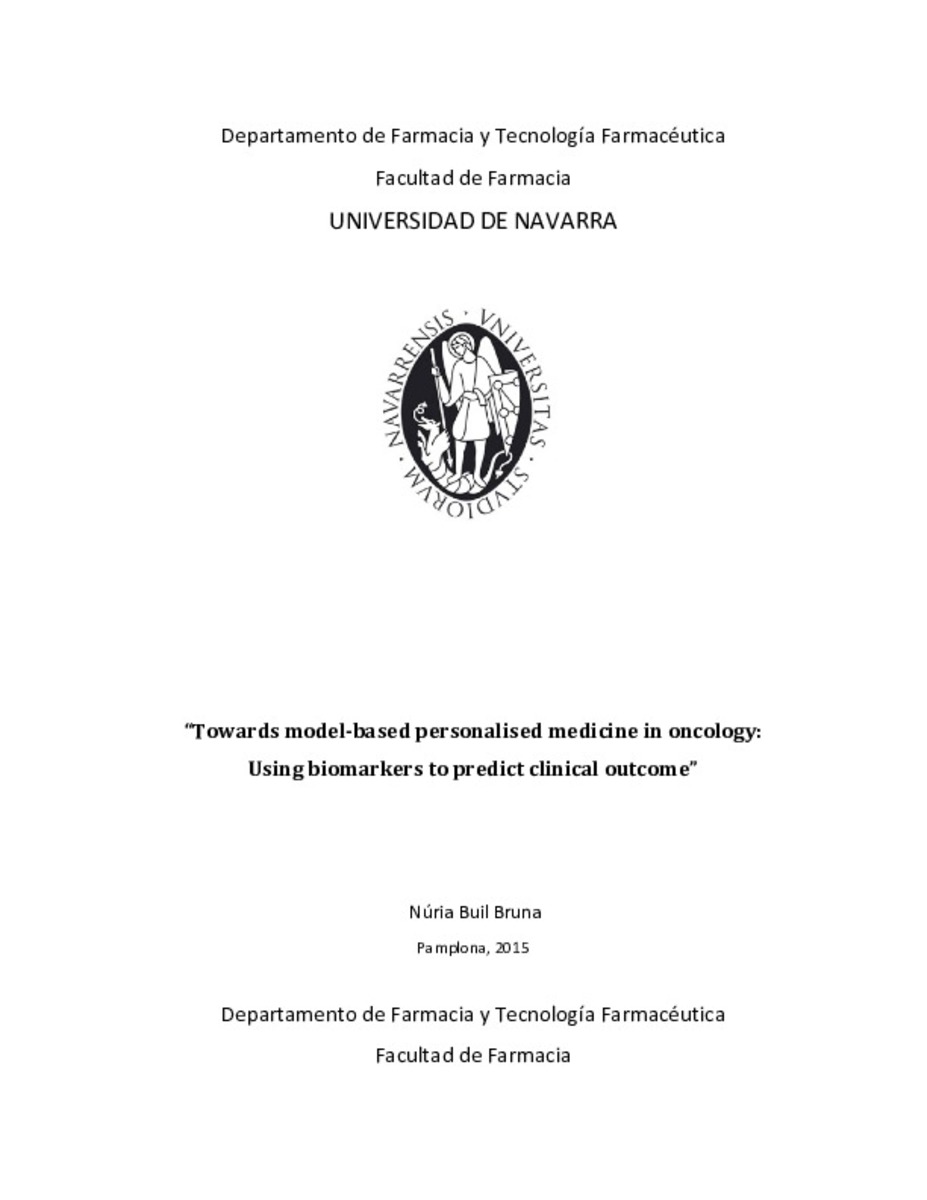Towards model-based personalised medicine in oncology: Using biomarkers to predict clinical outcome
Palabras clave :
Bioestadística
Modelos de población
Farmacología
Materias Investigacion::Farmacia::Farmacia y farmacología
Análisis de datos
Fecha de publicación :
25-nov-2019
Fecha de la defensa:
3-jul-2015
Cita:
BUIL BRUÑA, Núria. “Towards model-based personalised medicine in oncology: Using biomarkers to predict clinical outcome”. Trocóniz, J. I. y López-Picazo, J. M. (dirs.). Tesis doctoral. Universidad de Navarra, Pamplona, 2015.
Aparece en las colecciones:
Estadísticas e impacto
0 citas en

0 citas en

Los ítems de Dadun están protegidos por copyright, con todos los derechos reservados, a menos que se indique lo contrario.







